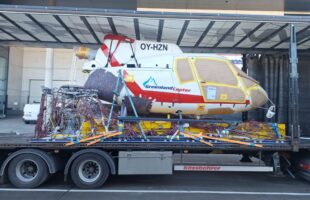

In an interview, Payload Asia talks to David Wee, IATA’s regional manager for operations, safety and security (cargo) in Asia Pacific, as he discusses the trade body’s strategy when it comes to developing air freight in the region.
Can you tell us about your role and responsibilities with IATA?
My role is to develop and execute IATA’s Cargo strategy and priorities for the Asia Pacific region. This includes engaging the air cargo community on sustainability, digitalization, safe carriage of cargo and mail, facilitating the global distribution of healthcare products and improving cross-border movement of goods.
I am also responsible for providing technical support and assistance to IATA members and stakeholders across the air cargo supply chain, promoting industry standards and best practices, and advanced solutions. Overall, my job is to support IATA’s members and industry stakeholders in making air cargo shipping more efficient and relevant for our customers.
What were the recent incidents that prompted the group to call for more attention on lithium batteries? Who assumes the burden for such incidents?
The focus on the safe carriage of lithium batteries was not prompted by any particular incident or event. Safety is aviation’s top priority and IATA sees the importance of addressing risk associating with the transport of lithium batteries. There has been a rapid increase in the global demand for lithium batteries, growing at 30 percent annually. This led to a rise in the risk of incidents involving misdeclared or undeclared lithium batteries This affects not just aviation industry but the entire cargo supply chain, including entities involved in the handling, storing or shipping of the batteries.
IATA has been very active in the industry in the past ten years in working with industry partners, including the International Civil Aviation Organization (ICAO) and Safe Aerospace Engineering (SAE) in developing and improving the shipping requirements for lithium batteries, and in establishing a safety data collection system to facilitate information sharing and analysis. With the usage and transport of lithium batteries accelerating, more actions need to be taken to help protect the air transport industry. Everyone—airlines, shippers, manufacturers, ground handlers, forwarders and government—in the supply chain is responsible for the safe carriage of lithium batteries. It’s a joint responsibility.
With lithium battery shipments coming mostly from Asia Pacific, what can you say about the current practices in place? Where is there room to improve?
Irrespective of where the lithium batteries are manufactured and transported from, all of them have to meet very stringent requirements laid out in the UN Manual of Tests and Criteria. In addition to that, the IATA Dangerous Goods Regulations also include all the provisions that apply to the safe transport of lithium battery shipments. The continued occurrences of aviation-related incidents involving lithium batteries carried as cargo or baggage goes to highlight that there is room for improvement.
There are challenges in several areas, including the poor quality of lithium batteries manufactured, which are either counterfeit or substandard. There’s also lack of competence or training of employees, including those of contracted ground handling agents, resulting in the acceptance of non-compliant shipments. Another is the lack of monitoring on ground handling agents leading to mishandling of shipments and consequently potential damage to lithium batteries that could result in cell failure leading to thermal runaway. Then there’s the large volume of e-commerce parcels containing high capacity lithium batteries that are packed in plastic bags or simply undeclared.
To mitigate these challenges, governments need to step-up enforcement of safety regulations for the transport of lithium batteries, impose quality control on lithium batteries and enforce penalties on rogue lithium batteries shippers. The development of specific standards and processes by governments to support the safe transport of lithium batteries will help provide an efficient process for compliant shippers. It is critical that these standards and processes are outcome based and globally harmonized.
Staff handling lithium batteries must be competent and trained and robust processes put in place to ensure lithium batteries are carefully managed and monitored throughout the cargo shipping journey. IATA has developed the Center of Excellence for Independent Validators Lithium Batteries (CEIV Li-batt) certification program. CEIV Li-batt is designed to build trust, staff competency and enable stakeholders to meet their safety obligations by complying with the applicable transport regulations.
How would you describe so-called offenders? And how do they get away with such malpractices?
International regulations and local legislation often have provisions on the transport of dangerous goods, including lithium batteries, which are applicable to international and domestic air transport. Offenders are therefore those who do not comply with the regulations. Some of this is simply ignorance, where people involved in shipping lithium batteries are not aware that they are classified as dangerous goods, and there are very specific requirements for transporting them by air. Of greater concern are the people who are aware of the regulations but chose not to comply with the regulations in order to reduce their cost.
Part of the challenge is that the transport of air cargo is built around trust: trust that the shippers correctly declare what they are shipping. The skills and technology of air cargo security can be an effective means to maintain this well-established system of trust and identify rogue shippers; however, such techniques are limited to locating security-related items, and would require the support from the governments.
How would you describe the current data collection and sharing process?
At the moment, it is mandated that an operator must report any occurrence of undeclared or misdeclared dangerous goods. Therefore, we have confidence that the local civil aviation authorities would have some data available. However, due to the sensitive nature of the data collected, some authorities are reluctant to disclose the details, which may then limit the operators’ ability to evaluate their risk exposure. In our opinion, while it is important to maintain the necessary data privacy, it is equally critical to have sufficient and valid data to understand the trend of events and the effectiveness of measures imposed, and most importantly to communicate and manage the risks. To promote data sharing, IATA’s Global Aviation Data Management (GADM) program, an aviation safety database, allows data sharing on a global level.
Is there a way to automate this process for the stakeholders involved? If yes, what is needed to make this happen?
Data collection is dependent on the person reporting the incidents, however, the reporting process can be made easier by using existing technology such as mobile messaging app or web-based platforms and digital solutions such as IATA DG AutoCheck, a dangerous goods acceptance check validation tool that helps shippers identify misdeclaration at goods acceptance stage before it is loaded onto the aircraft.
Which airports or airlines in Asia Pacific are paving the way for safer transport of lithium batteries, if any?
We are aware that the safe carriage of lithium batteries is on the agenda of many IATA member airlines, who are actively reviewing their safety risk assessments and adjusting their operational policies and procedures to tackle the issue. We also observed that some airports are also at the forefront in the industry to promote the safe carriage of goods.









